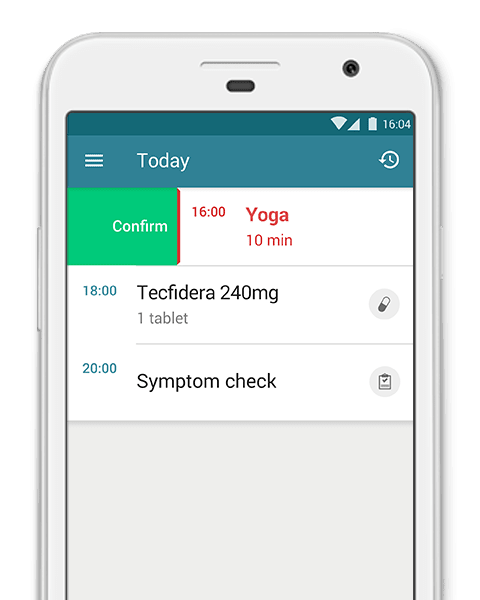Remarkable progress has been made in the treatment of multiple sclerosis in the last decade. Disease-modifying drugs such as Rebif, Tecfidera, Aubagio, and Gilenya have proven effective at slowing down disease progression and reducing the number of relapses many people are experiencing. Ocrevus, approved in 2017, has ushered in a new era of B cell-targeted treatment that can help treat patients living with primary progressive MS. Here are some emerging treatments that may be available shortly.
Pipeline Drugs for Relapsing MS
The majority of disease-modifying therapies (DMTs) that have been approved to treat multiple sclerosis are for relapsing forms of MS, which usually refers to clinically-isolated syndrome (CIS), relapsing-remitting MS (RRMS), and secondary progressive MS with relapses (or “active” SPMS).
Having access to drugs with a range of mechanisms of action and forms of administration, such as self-injections, oral medications, and infusions, helps doctors and patients find effective treatment that suits individual requirements.
As researchers learn more about how these treatments work and combat MS, drugs that are more effective, cause fewer or less severe side effects, and are more convenient for patients are under development. Some are already under review by regulatory bodies (such as the FDA in the US and EMA in Europe) and may be available soon.
Ozanimod
Ozanimod is the active ingredient in Zeposia, which is an oral treatment taken once per day. Although it was approved to treat relapsing forms of MS by the FDA in March 2020, Bristol Myers Squibb (BMS) held off launching it until the beginning of June because of the coronavirus pandemic.
In Europe, Zeposia is still under review by the EMA, with a decision expected shortly.
Like the Novartis duo of Gilenya (active ingredient fingolimod) and Mayzent (siponimod), Zeposia is a sphingosine-1-phosphate (S1P) receptor modulator. According to BMS, Zeposia is more convenient than either as it does not require genetic testing or cardiovascular monitoring after the first dose. Given the circumstances of the pandemic and the indefinite need for distancing in many parts of the world, BMS are keen to stress that this is likely to mean fewer visits to the clinic are necessary.
Both Zeposia and Mayzent, which was approved in 2019, are claimed to have a better safety profile than the older drug, Gilenya (approved by the FDA in 2010), as well as having a greater effect at reducing cognitive symptoms such as difficulty concentrating.
Ponesimod
In March 2020, Janssen applied for FDA and EMA approval for another S1P receptor modulator, ponesimod, to treat relapsing forms of MS. Like the previously mentioned drugs, ponesimod’s mechanism of action prevents immune cells, called lymphocytes, from leaving lymph nodes. This, subsequently, prevents them from entering circulation and reaching the brain and spinal cord, helping reduce the damage done to myelin, lower relapse rates, and slow disease progression.
Like ozanimod (Zeposia) and siponimod (Mayzent), ponesimod is part of a new wave of S1P receptor modulators that are more selective than the older drug, fingolimod (Gilenya). Specifically, they target sphingosine-1-phosphate subtype 1, hence why you may see them referred to as S1P1 receptor modulators. This selectivity is helpful in preventing unwanted effects on other parts of the body, such as the cardiovascular system.
Janssen has applied for approval off the back of a phase 3 clinical trial in which ponesimod was compared to Aubagio, which has the active ingredient teriflunomide. The study found that ponesimod was around 30% more effective at reducing relapses. Janssen also highlights that ponesimod was more effective at reducing fatigue, as measures with the Fatigue Symptoms and Impacts Questionnaire-Relapsing Multiple Sclerosis (FSIQ-RMS).
The FDA is expected to make a decision regarding approval for ponesimod later in 2020.
Ofatumumab
Ofatumumab and ocrelizumab are two MS therapies that target the surface molecule CD 20, thereby selectively depleting B cells. One of the key differences between the therapies is how it is administered; Ocrevus is given every 6 months with intravenous infusions while ofatumumab is injected subcutaneously (under the skin) once every 4 weeks.
A potential key benefit of the latter is that it can be done at home rather than at a clinic. While this places a greater responsibility on patients regarding adherence, it is likely to suit a lot of people.
Another key difference is that Novartis, the manufacturer of ofatumumab, are focusing on relapsing forms of MS, whereas Ocrevus is also approved for the treatment of primary progressive MS. It remains to be seen whether Novartis will trial ofatumumab in people living with PPMS, who account for around 10% to 15% of all MS cases.
Pipeline Drugs for Progressive MS
While several DMTs are approved for relapsing forms of MS, such as relapsing-remitting MS (RRMS) and secondary progressive MS with relapses (active SPMS), only Ocrevus is currently approved for the treatment for primary progressive MS (PPMS).
Additionally, there is a gap in the market for treatment for people living with secondary progressive MS without relapses (non-active SPMS). While early detection and effective DMTs are helping prevent or delay people developing non-active SPMS from relapsing-remitting MS, researchers are continuing to look for ways of slowing disease progression and reducing the rate of disability.
Ibudilast
In July 2019 MediciNova announced that a drug it labels ‘MN-166’, with the active ingredient ibudilast, would begin a phase 3 clinical trial with patients living with secondary progressive MS without relapses (non-active SPMS).
In a previous phase 2b trial involving patients with PPMS, active SPMS, and non-active SPMS, MediciNova found that ibudilast reduced the risk of confirmed disability progression (measured by EDSS) in those with non-active SPMS by 46% compared to a placebo.
The drug itself is administered orally twice daily and helps reduce inflammation in the brain. Its mechanism of action may make it a treatment option for other conditions, including amyotrophic lateral sclerosis (ALS).
The results of the phase 3 trial will likely determine whether MediciNova applies for approval for MN-166 to treat non-active SPMS.
High-dose Biotin (MD1003)
Biotin is a B vitamin that is available as a supplement. MD1003 is a high-dose formulation that has been trialed for the treatment of progressive MS. MD1003 may help activate enzymes that are involved with the production and synthesis of myelin, thus helping repair damage.
A phase 3 trial called MS-SPI aimed at improving disability metrics, either in terms of EDSS or the time taken to walk 25 feet, particularly in patients who were experiencing gait impairment.
After 2 years, 15% of participants taking MD1003 had reduced disability.
However, in March 2020 MedDay, the company that produces MD1003, said that a larger follow-up study called SPI2 had failed to confirm the positive results from the initial study.
It remains to be seen whether the company continues to investigate MD1003 for the treatment of progressive MS.
What’s Next for MS Treatment?
The drugs mentioned in this article are just a handful of those being developed to treat multiple sclerosis. If you would like to browse other ongoing trials, you can use the search function at ClinicalTrials.gov.
Alternatively, keep an eye on great resources such as:
You can also learn more about current MS therapies from our DrugWiki:



